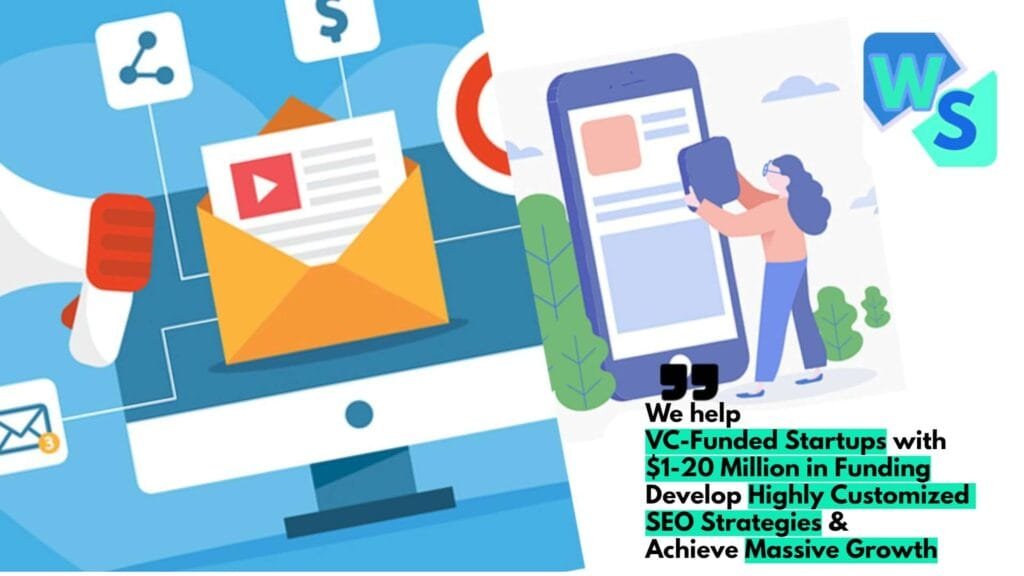Understanding Inbound Marketing
Let’s talk about inbound marketing. It’s all about attracting folks with cool content, tailor-made experiences, and the right kind of interactions. The idea is, get them knocking on your door instead of shouting from the rooftops like in traditional ads. Simple, right?
Importance of Measuring Success
So, you’re running your inbound marketing gig, but how do you know it’s working? For marketers, showing off the success of their efforts helps them keep the boss happy and the money rolling in, hopefully more than just coffee-budget levels. Metrics, my friend, are your new best buddies. They help not just in keeping costs in check but can also be the magic ticket to landing extra funding for the marketing team.
Keeping tabs on how you’re doing in real-time lets you tweak things for the better. This means you can shuffle some of those marketing tricks, better manage your tank of resources, and get the most bang for your buck.
Key Performance Indicators (KPIs)
Let’s get to KPIs—basically, the yardsticks of your inbound marketing world. Here’s a rundown of some must-watch KPIs:
| KPI | Description |
|---|---|
| Conversion Rate | How many folks hit that “sign me up” button or bought something—it’s how you know you’re grabbing their attention. |
| Average Session Duration | Essentially, how long people hang around your site—it gives you a feel for whether your content’s a hit or meh. |
| Cost Per Lead | What it costs to snag a new potential customer, letting you know if your effort’s worth the dough. |
| Website Traffic | The headcount of visitors strutting through your site—from which you can gauge how irresistible your lure is. |
| Bounce Rate | Who’s hightailing it outta there after one page—could mean your content needs a bit more jazz. |
When you’ve got these KPIs down pat, you know where you stand. It’s like having a cheat sheet for success: proper tools, clear goals, and a timeline that matches your ambitions go a long way.
These metrics are not just numbers; they’re the insights to help you keep fine-tuning those marketing moves. Put in some solid lead capture processes, such as also irresistible offers that people can’t resist signing up for, proves its weight in gold. Check out more gems on inbound marketing strategies to polish your inbound efforts.
Crafting an Effective Strategy
So, you wanna nail down an inbound marketing plan? Start with a game plan that’s all about laying out your steps, knowing who you’re talking to, and keeping your aims in sight.
Inbound Marketing Process
Here’s what it’s about – getting folks to notice you, keeping them interested, and turning them into loyal fans with the kind of stuff they find useful. There are four steps to this magic:
- Attract: Lure in visitors like bees to honey with top-notch stuff – think how-to videos, eye-catching infographics, and goodies they can download. Don’t forget to polish up your website with SEO flair.
- Engage: Now that they’re here, make ’em stay. Offer them what they need – a snazzy action button or a landing page that speaks their language.
- Delight: Give them the red-carpet treatment so they stick around. Keep popping up in their inbox with tips, chat with them on social media, and keep the goodies coming.
- Analyze: Peek into those stats to see what’s rockin’ or what needs a tweak. Use those findings to step up your game.
Creating Buyer Personas
Understanding your peeps is where the magic starts. Think of buyer personas as characters in your marketing story who need your products and services (Raka Creative). How to craft these personas? Here’s a bit of a guide:
- Demographics: Who are they? Check out their age, gender, income, and schooling level.
- Goals and Challenges: What are they gunning for? What’s standing in their way?
- Behavior Patterns: How do they roll online? What are they into, and what do they avoid?
These insights are the key to writing content that clicks with what they’re actually looking for.
Setting SMART Goals
Yup, setting SMART goals can turn your strategy from blah to blazing. That means being super clear about what you want, and making the goals judgeable, doable, tied to bigger plans and time-sensitive.
| SMART Jargon | What’s It Mean? |
|---|---|
| Specific | Get clear, no fluff, straight to the point |
| Measurable | Have numbers in mind to show progress |
| Achievable | Set goals you can actually hit given your setup |
| Relevant | Hook them up with what you’re really about |
| Time-bound | Nail down a deadline |
Picture a SMART goal like this: “Bump up website visits by 30% in half a year using fancy SEO tactics and killer content.”
Put these pointers to practice and watch as business big shots and marketing whizzes score wins. Joining hands with an inbound marketing strategy agency that knows its stuff can be a game-changer—especially with all the noise out there today.
Implementing Inbound Marketing Tactics
Alright, ready to dive into the world of inbound marketing? Here’s my take on what makes this work: website design, a sprinkle of SEO magic, and content that’s genuinely worth reading.
Website Design and Optimization
First stop, your website. Think of it as your online living room, where you want guests to feel welcome and stick around. A solid site doesn’t just look pretty—it functions well and invites people in.
Here’s what you should focus on:
- User Experience (UX): You ever been to a place and just didn’t know where anything was? Don’t let your website be like that. Make it so folks can easily find their way around.
- Call-to-Action (CTA): These are like bright neon signs saying “Hey, check this out!” Whether you want them to sign up for more updates or watch a demo, guide their steps.
- Mobile Optimization: Everybody and their grandma are on phones these days. Make sure your site works beautifully on mobile screens too.
| Website Must-Haves | Why They Matter |
|---|---|
| User Experience | Keeps visitors coming back |
| Call-to-Action | Boosts interactions and conversions |
| Mobile Optimization | Reaches the mobile-savvy crowd |
Understand your audience and you’re halfway there. Got more questions? Our inbound marketing strategies page probably has what you’re looking for.
SEO Strategies
If your website is your home, SEO is like the directions that help people find you. It’s critical to be visible when folks search online for stuff you offer.
Here’s what you need to do:
- Keyword Research: Find out what your potential customers are typing in that search bar and weave those words into your content seamlessly.
- On-Page SEO: Get your titles, metas, and headings in tip-top shape so search engines love them.
- Content Quality: Don’t skimp on quality. Good content answers questions, solves problems, and keeps people engaged.
Apply these tricks to bring those visitors naturally and watch your credibility grow. Need more on this? See our inbound marketing statistics page for some enlightening data.
Content Creation
Here’s the heart of it all—content. What you write should serve a purpose and relate to where your audience is in their decision-making process. Great content pulls folks in and walks them through the sales funnel.
Consider these content types:
- Blogs: Offer insights and stories that your audience can relate to. Groove, for example, uses their blog to weave their company tale and give real value (Groove Example).
- Email Marketing: It’s all about saying the right thing at the right time. Uber does it with location-based messages that resonate (Uber Example).
- Social Media Engagement: Make sure you’re sharing on platforms where your audience hangs out, fostering a sense of community.
Pumping resources into producing quality content can really pay off down the line. For more on creating content that rocks, peek at our inbound marketing content advice section.
With these hardcore tactics—nailed website design, killer SEO, and superb content creation—you’re on the path to jazzing up your inbound marketing game. Time for growth, folks!
Tools for Success
When getting an inbound marketing strategy agency off the ground, having the right gadgets in your toolkit is kind of like finding that perfect cup of coffee—it makes everything run smoother. I’m gonna chat about why analytics and snooping around your data is essential, and how picking the right marketing toys to play with can make or break you.
Analytics and Monitoring
Now, metrics might sound like something only hard-core nerds talk about, but they’re gold when it comes to knowing if we’re hitting the mark. Here’s the rundown of my usual suspects:
| KPI | Description |
|---|---|
| Conversion Rate | How many curious folks are doing what we want (like signing up) |
| Average Session Duration | How long someone hangs out on our site |
| Cost per Lead | What we’re spending to reel in a potential customer |
| Website Traffic | The footfall on our digital doorstep |
| Bounce Rate | How many visitors are like, “Nope, not today,” and skidaddle |
Keeping tabs on these numbers means I get a pretty solid picture of how things are going. But it ain’t just about watching numbers dance on a spreadsheet. I put milestones and goals in place and use some inbound marketing analytics tools like a pro. Having clear targets and a timeline means I pull off creating a nifty dashboard to show off results (Invoca).
Utilizing Marketing Tools
Now, having the right tools is like having a Swiss army knife in a world of butter knives. Some trusty platforms help me dodge the potholes and keep my strategy in the fast lane:
| Tool Category | Examples |
|---|---|
| Analytics | Google Analytics, HubSpot, SEMrush |
| SEO | Moz, Ahrefs, Yoast SEO |
| Content Creation | BuzzSumo, Grammarly, Canva |
| Marketing Automation | Mailchimp, Marketo, HubSpot |
| Social Media Management | Hootsuite, Buffer, Sprout Social |
When you’re steering a marketing agency, you’ve gotta mix and match tools like a DJ at a mid-90s party to get those jams right. Agencies juggle everything from analytics deep dives to cooking up compelling content and orchestrating SEO magic.
By getting chummy with the right analytics and marketing tools, I’m setting the stage for my agency to strut its stuff. It’s all about teamwork, right? Lots of folks struggle when trying to craft a seamless strategy alone—and that’s where the cavalry comes in (RiseFuel).
Examples of Successful Campaigns
Seeing how businesses make the most of inbound marketing can give us some pretty neat ideas on what works. I’m about to dive into three campaigns that deserve a nod for really nailing it with inbound marketing, making their brands pop and pumping up customer interest.
Ryanair’s Gen Z Groove
Ryanair has been all about getting the Gen Z crowd hooked through lively social media. Since 2019, they’ve bagged over 1.9 million followers and a whopping 25.7 million likes on TikTok. They’ve done this by truly understanding who their buyers are—speaking their language, sharing their humor, and overall just clicking with young travelers. This down-to-earth style hasn’t just boosted their numbers; it’s also got folks booking more flights and sticking around.
| Metric | Numbers |
|---|---|
| TikTok Followers | 1.9M |
| TikTok Likes | 25.7M |
Southend Dog Training’s Lockdown Leap
Southend Dog Training grabbed onto TikTok during the pandemic and didn’t look back. With a spike to 2 million followers there, plus 925,000 on Instagram, they shared short, snappy dog training clips just when folks needed them most. Lockdown pets needed some discipline, and these guys dished it out with flair, quickly becoming the go-to for pet owners craving tips (Avidly Agency).
| Platform | Followers Count |
|---|---|
| TikTok | 2M |
| 925K |
The Babish Culinary Universe
Meet The Babish Culinary Universe, cooked up by Andrew Rea. This guy’s a whiz at making videos folks want to share over and over. He recreates famous dishes with a charm that’s downright addicting, making people engage and remember what he’s about. This style not only keeps folks coming back, but they’re sending it to friends left and right—a classic case of successful inbound marketing. Andrew keeps the focus on giving out good stuff, and it pays off in loyal fans (Avidly Agency).
These stories show that if you craft an inbound marketing plan that really talks to your audience, you’re on the right track. These brands have done it, and it’s worked wonders in getting their name out there and keeping customers loyal. If you wanna see more winning strategies, check out other inbound marketing examples for a few extra lightbulb moments.
Working with Marketing Agencies
Getting a lift from a marketing agency can be a game changer for any business. Knowing the services available and picking the right agency can spell long-term success. Let’s make sense of it.
Services Offered by Agencies
Marketing agencies are like your Swiss Army knife, offering a variety of services to match what their clients need. They’ve got experts buzzing around like bees, each with their own specialty, teaming up to help businesses hit their targets. Here’s a peek at what they usually offer:
| Service | Description |
|---|---|
| Content Creation | Coming up with content that grabs attention and makes your target audience nod along. |
| SEO Strategies | Sprucing up your online presence so your website gets cozy with search engines and attracts new visitors. |
| Social Media Management | Keeping your social media game strong to boost your brand’s chatter and follower love. |
| Analytics and Reporting | Tracking how things are going and sharing insights that break down what’s working and what’s not. |
| Email Marketing | Crafting emails that keep your audience in the loop and hooked on what you offer. |
These services make it easier for businesses to connect with customers and check their marketing boxes. Agencies offer a big help, especially for businesses that don’t have their own marketing gurus (Evenbound).
Selecting the Right Agency
Choosing the best marketing agency is like finding a dance partner; you want someone who clicks with you and sees where you want to go. Here’s what to keep in mind:
Expertise: Pick an agency with inbound marketing chops and a history of making clients happy. You can check out their knowledge about inbound marketing techniques and see their toolbox in action.
Alignment with Goals: Make sure they get your vision. A team that sees the big picture is set to help you nail your business dreams.
Collaboration: Your work with the agency should feel like a good jam session. Open talks and regular check-ins are key to hitting the right notes together.
Client Testimonials: Dig into stories or feedback from others who’ve been in your shoes. These accounts demonstrate their knack for getting things done right (peep their success stories here).
Flexibility and Support: Your ideal agency should be like Play-Doh—moldable and supportive, ready to change tunes when needed and jump on the latest tech trends.
Sizing up these factors helps find the agency that “gets” inbound marketing and can push your business to thrive. Explore more resources and courses to get extra savvy in your hunt for the perfect agency sidekick.
Realizing Inbound Marketing Benefits
Adopting an inbound marketing strategy can work wonders for businesses. From boosting brand visibility to saving money and tracking results like a pro, it’s easy to see why teaming up with an inbound marketing agency is smart.
Brand Awareness and Loyalty
Inbound marketing gives a much-needed bump in brand recognition over old-school advertising. By crafting engaging content and joining in on social media chats, businesses snag a bigger audience. This natural growth builds trust and a good rep for your brand. Connecting with customers through content they’re itching for shows you care and earns their loyalty. One study found inbound marketing lets businesses pinpoint how their messages are landing by checking out KPIs tied to content interactions and social vibes (Rock Content).
Cost-Effectiveness
One of inbound marketing’s standout perks is how budget-friendly it is. The strategy cuts down Customer Acquisition Cost (CAC), letting businesses get better results without throwing heaps more cash at it. This means spending less while drawing customers through the sales funnel: attract, engage, and delight. In short, it’s cheaper to turn interested folks into devoted fans (Rock Content). Here’s a quick peek at cost differences between inbound and outbound marketing:
| Method | Average Cost per Acquisition |
|---|---|
| Inbound Marketing | Way Lower |
| Outbound Marketing | Higher |
Tracking Results and KPIs
A key piece of the inbound marketing puzzle is tracking how things are going. It’s been the top method for online businesses since 2006, offering slick processes like gated content offers (think free ebooks and webinars). These are crucial for grabbing user info for nurturing future customers (Aira). Inbound marketing also lets you peek behind the curtain to see how customers are behaving, making tweaks to your messaging a breeze thanks to clear KPI data.
By cashing in on these benefits, I can elevate brand presence and make sure my marketing game is both on point and efficient. For a deeper look into different parts of inbound marketing, check out our resources on inbound marketing statistics and inbound marketing strategies.
Aligning Sales and Marketing
Revenue Generation Alignment
Getting sales and marketing on the same page is like putting peanut butter on jelly – it’s essential for making things come together. A well-thought-out marketing plan nudges both teams to chase the same leads and close the same deals. It creates one smooth path for customers from their first click to the final purchase.
The magic here is setting shared goals and keeping an eye on the same success markers. Sales and marketing should track shared Key Performance Indicators (KPIs) like:
| KPI | Description |
|---|---|
| Lead Conversion Rate | How many leads turn into paying customers. |
| Customer Acquisition Cost (CAC) | Dollars spent to get a new customer. |
| Return on Investment (ROI) | Comparing money made from marketing to how much was spent. |
| Sales Qualified Leads (SQLs) | Leads ready to be picked up by sales after marketing does its vetting. |
Watching these KPIs means both teams are rowing in the same direction. If you spend a dollar on customer relationship software, you might make back almost nine bucks – clearly showing the benefit of getting sales and marketing to buddy up (HubSpot).
CRM Implementation and Maintenance
Kicking off a good Customer Relationship Management (CRM) system is like nailing the first tee shot in golf – set it up right and you’re ahead of the game! Surprisingly, a lot of folks weren’t using them back in 2016. But that just means there’s room to grow and for marketing agencies to jump in and help guide the way with smart CRM strategies.
CRM tools let businesses keep tabs on customer chats, manage leads, and crunch the numbers to make smarter choices. If companies team up with a good marketing agency, they can tailor their CRM system to fit like a glove, making things run smoother and improving communication.
Many smaller outfits that aren’t yet rocking big operations departments are perfect candidates for agencies to swoop in and offer regular help with CRM systems. These services might include:
- Keeping the CRM updated so it doesn’t lag behind changing business goals.
- Tidy up the CRM space to keep things efficient.
- Coaching teams on how to get the most out of CRM for grabbing key customer info.
Sales enablement services also make a big difference, offering teams the tools they need. This can range from ready-made email spiels to setting up sales follow-up routines and even offering cheat sheets on products. Doing this jazzes up the sales routine and helps bring in the bucks.
By syncing up sales and marketing with a solid CRM plan, companies lay down a strong track to boost income and supercharge their overall business game.
Sales Enablement Services
Sales enablement services are like the secret sauce that spices up a sales team’s efficiency. When you blend marketing and sales with precision, everyone from your team to your bottom line gets a boost.
Enhancing Sales Team Productivity
Ever wished your sales team could kick into high gear? Sales enablement is like a high-octane fuel for productivity, giving teams the turbo-charged tools they need. Think along the lines of handy email templates, organized sequences, and go-to resources for when prospects start asking those tricky questions about products.
These magic tools save mountains of precious time and make sure everyone sings the same tune. So instead of getting buried under a pile of paperwork, sales reps can do what they do best: clinch those deals and build relationships.
| Service Type | Benefit |
|---|---|
| Email Templates | Simplifies messaging |
| Product Documentation | Makes product info clear as day |
| Sales Training Programs | Boosts know-how and skills |
Curious to see how the magic happens? Jump into our insider talks on inbound marketing strategies and benefits of inbound marketing.
Providing Sales Resources
Stocking up on valuable sales resources is another big win in the sales enablement book. This is especially true for smaller businesses that don’t have a whole team dedicated to keeping things running smoothly.
CRM—the trusty sidekick in sales dramas—steps in with hero qualities when customized and maintained just right. Imagine it like tidying up a chaotic desk, making the whole sales operation run like clockwork (HubSpot).
Here’s the goldmine of essential tools:
- Product sheets loaded with every detail your client might need
- Success stories that show your product in action
- Reports that tell you how you stack up against the competition
Packed with this arsenal, your team can chat with clients like they’re reading from the same playbook, leaving no stone unturned in their path to success.
By amping up your sales team’s productivity and arming them with the right resources, grabbing the expertise of an inbound marketing agency might just turn out to be your business’s winning strategy.



















